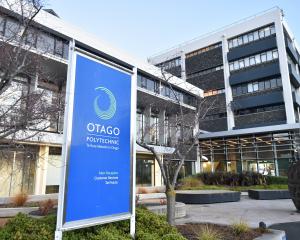Is it only a matter of time before New Zealand experiences another building disaster on the scale of the leaky home debacle?
It is hard not to ponder that thought following revelations inferior Chinese-made steel, destined for use as steel piles on a multimillion-dollar roading project in the Waikato, was uncovered in this country.
Sixteen hundred tonnes of steel, part of four bridges on the $450 million Huntly bypass, which forms part of the $2 billion Waikato Expressway, failed strength tests in New Zealand. This was despite that steel apparently passing tests in China.
The road is being built by Fulton Hogan which bought the steel from New Zealand company Steel & Tube Holdings. Concerns about the quality of the steel were identified in February and subsequent testing revealed it did not meet New Zealand standards. Time pressure meant it was used in two of the four bridges but only after a redesign and additional concrete reinforcement.
Steel & Tube, which imported the steel from China, claims the steel was subject to independent testing, including a pre-export inspection by SGS - a global inspection and verification company.
The Government has been quick to dismiss the issue as a one-off and said it would not investigate the importation of the weak steel
But those in the industry have some genuine fears.
While this steel was identified as inferior, there are concerns other imported steel being used in the private sector will not be subjected to subsequent testing once in New Zealand. Who will know if it meets the required standard?
With New Zealand's current building boom, industry leaders believe some Asian steel-making companies are taking advantage of that situation. Reports say iron and steel imports from China have doubled from $200 million to $400 million since 2010, mostly at the expense of Australian steel imports.
Contractors looking to cut corners could save significant money by buying steel from less reputable Chinese manufacturers.
Imported steel is expected to meet certification for use in New Zealand. But there have been concerns only small samples are tested for quality, which is not representative of the product which is actually being shipped out of factories. The steel is effectively being shipped with forged test certificates, some believe.
This news comes only months after alarm about a growing number of poor-quality building parts making their way into this country.
The Building Industry Federation and Construction Industry Council is now looking at product quality after concerns were raised about plumbing equipment, electrical products, exterior cladding, roofing and glass. Plumbing parts, which are expected to last New Zealand's durability standard of 20 years, appear to be leading the concerns.
There have also been issues with steel reinforcing mesh which the Commerce Commission is investigating.
While inferior products will save contractors money, enabling their tenders to be more competitive, the building owner or occupier ultimately pays the price.
The leaky home crisis came to light in the late 1990s after the use of inferior cladding on homes and the cost has now been put at between $11 billion and $22 billion.
The 2011 Christchurch earthquake, and in particular the collapse of the CTV Building which claimed the lives of 115 people, again illustrated the need for rigorous building standards to be met.
This latest issue has prompted calls for mandatory random testing of all steel imports. Surely, it is in this country's interest to ensure that happens.











